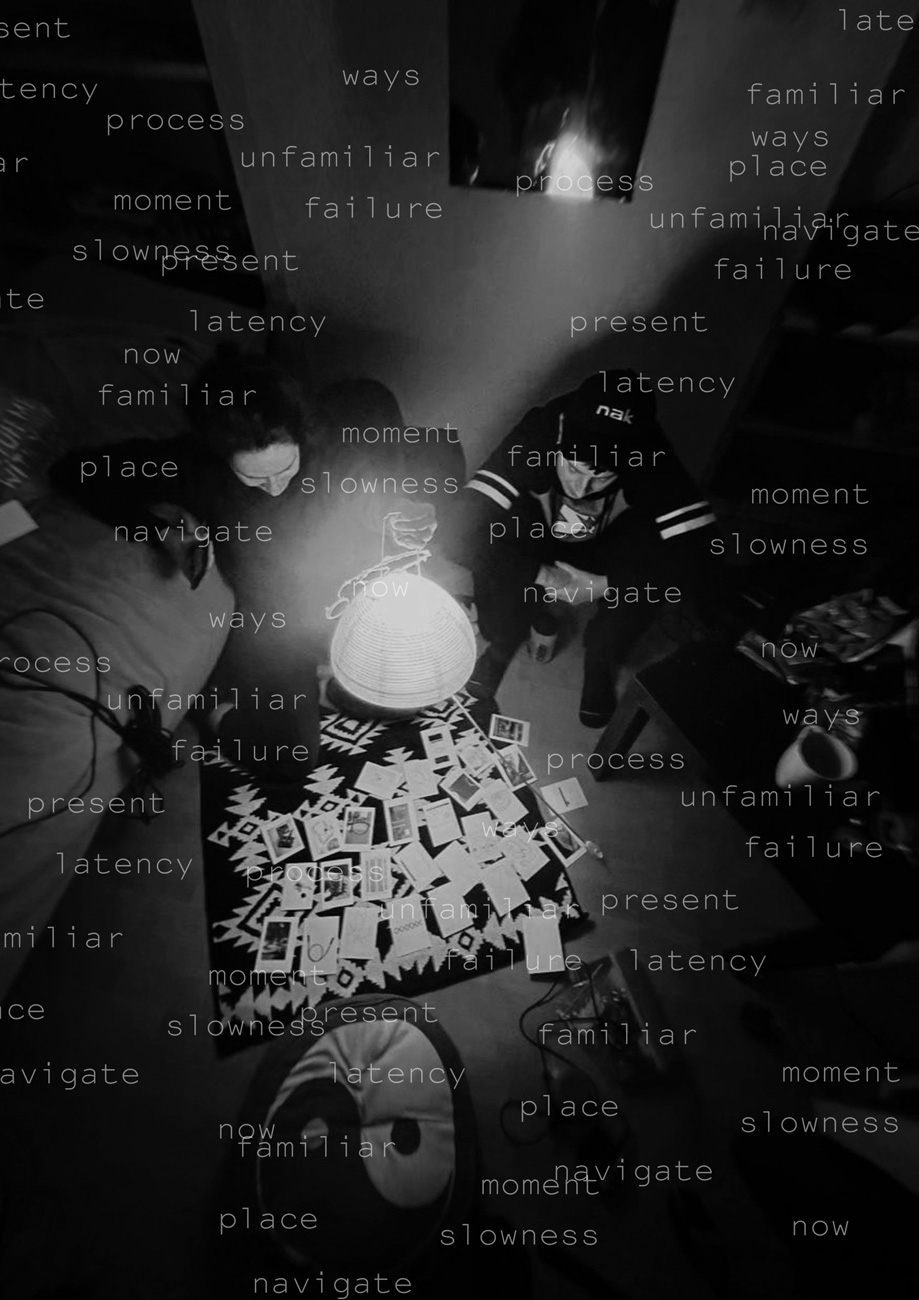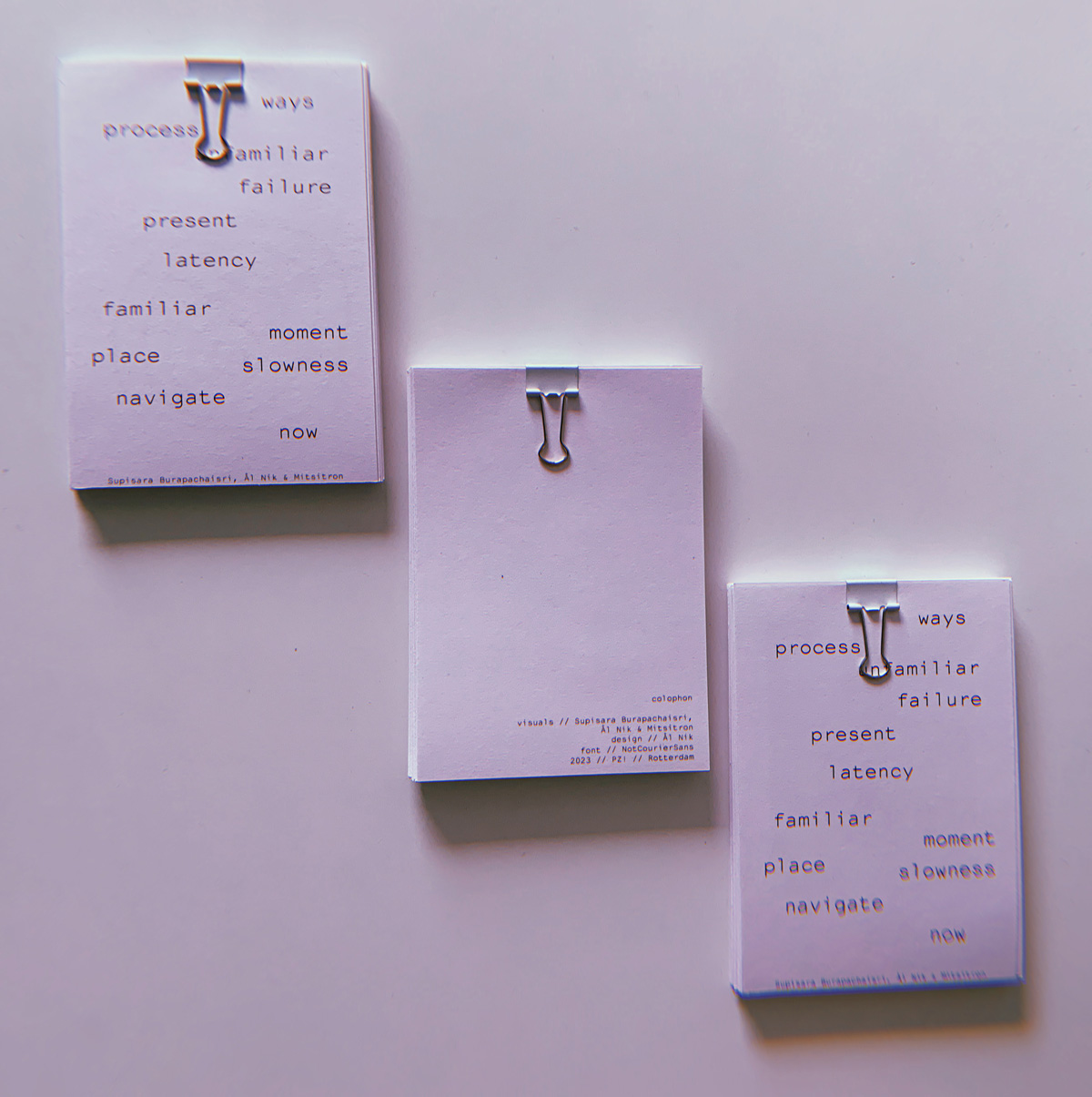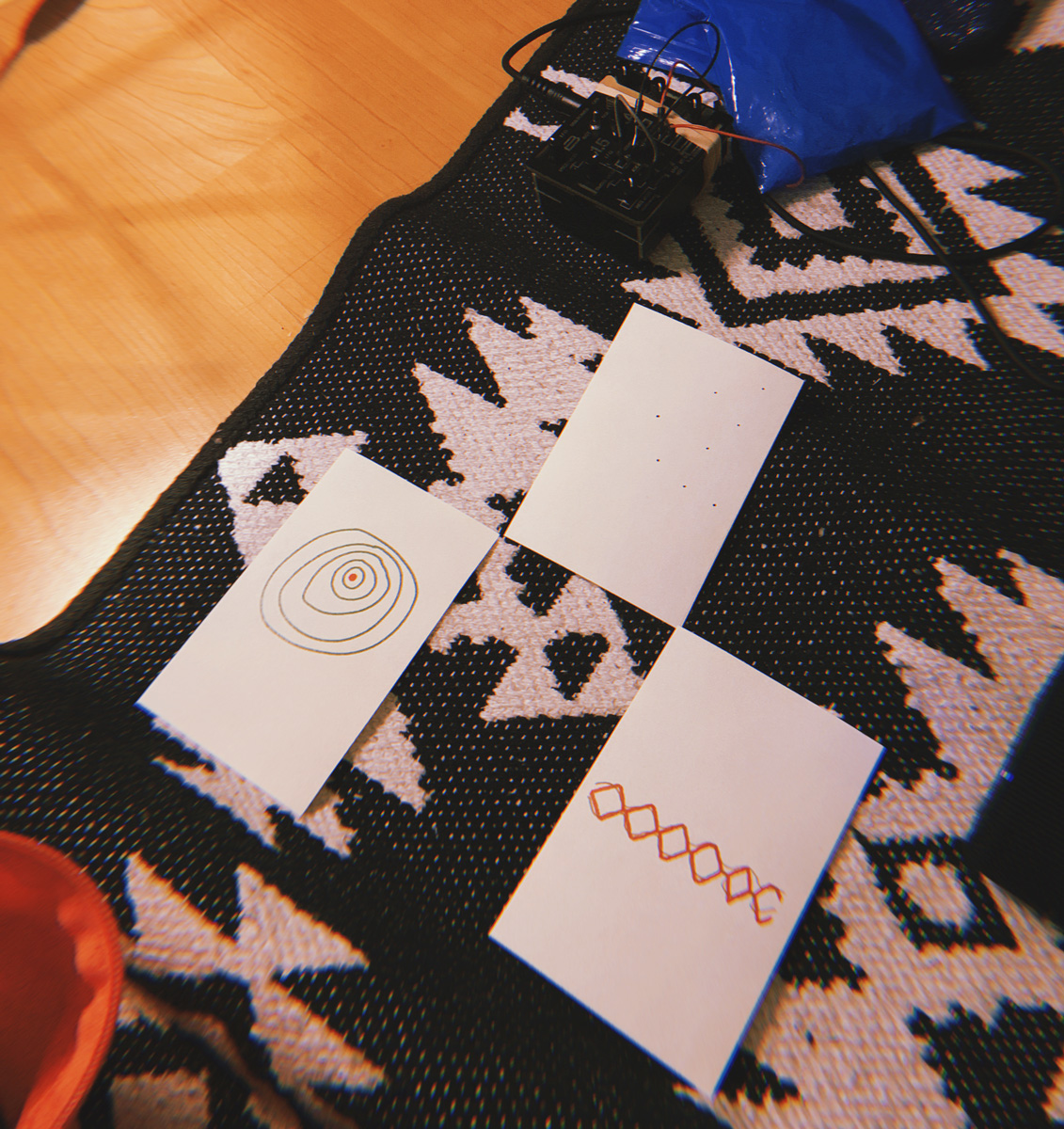Sound jams: resister at worm
// back to Sound jams
sound jam #4 // re#sister impro performance
intro
The research of Supisara Burapachaisri, Ål Nik and mitsitron will meet at a Sound Jam at WORM. We are happy to invite you to join us at #Wunderbar or online at Radio WORM - we will be part of Expanded Radio’s session with a spotlight on RE#SISTER, WORM’s very own studio community run by and for female and non-binary musicians!
Our performance will be an improvisation based on a visual score we’ve been working on during the last week. The three of us were experimenting by asking ourselves questions, connected to our current researches, part of our master programme of Experimental Publishing at the Piet Zwart Institute. We created and collected images that resonate with our research queries and turned them into cards. Those cards will serve as a visual score of our performance.
We have been questioning “performing” as a concept, oftentimes associated with perfection, pressure and preparedness. What if we focus on the process instead? Is there a way to embrace slowness, latency and even failure? To put our attention on the small scale instruments and sounds, play with the basics. To be fully present in the current moment and space. Our sound jam will explore these questions.
Where: Radio WORM & Wunderbar
When: doors 14:30, start 15:00 h // 12-02-2023
More info: https://worm.org/production/expanded-radio-16-resister/
process
For this Sound Jam, i proposed a process that creates a visual score as a base of our improvisation performance. In order to come up with a concept, i wanted us to explore topics, questions and things that have been bothering us recently. Each of us had different needs and inputs in this sound jam, thus there should have been space to address and explore them and yet still have a meeting point.
[steps] we started with a session to explore possible (mini)research questions. We started with 10 minutes of free writing - putting on a blank page our most intuitive thoughts and explore how we feel at the moment; what has been on our minds. Afterwards, we had some more time to read it and extract a question - something that is present in our writings and we would like to explore during the upcoming few days. We wrote this questions on a small piece of paper, a piece we could carry around with us.
After that we did three interviews to elaborate more on the questions and help each other narrow them down, understand them better and think of a process to explore them. Each of us had 10 minutes - one was asking question about one's interest, they were answering and elaborating more, and the third person was taking notes. This activity we borrowed from our Thesis seminars at Experimental Publishing master course at PZI.
Finally, we had a homework: during the next several days we had to create visuals or take photos of things that we somehow connect to our research questions - either sketches that help us explore it; or photos of tools and experiments; or whatever helps us work on the matter. Everyone had to select 10 of them and send them to me. With them, i made a small 4-editions publication in the medium of cards.
At our next session, we talked about the visuals and why we had chosen them. We shuffled them, connected them, and chose 3 images to use as a visual score of our jamming session.
▶ wip pad is here
▶ interviews pad is here
intention
The intention of the facilitation process of this sound jam was to create and try out a method of doing an improvised sound performance live on the radio. Improvisation jamming sessions can have different approaches and often we focus more on the moment of bringing our sound into the moment when performing with the others. For this jam, I was interested in trying two main approaches - collectively creating a visual score based on a concept/theme that is interesting for all of the members of the group; and performing while looking at those visuals, but still by listening and responding to each other's sounds. This two-layered improvisation method is also challenging because the performance was public and brought some additional pressure and anxiety. However, the core goal of the process was not to make things more complicated, but on the contrary: to prepare the trio for the improvisation sound performance and to bring their interests and needs together.
The type of this sound jam was a jamming session. The process of making and publishing happened at a particular time period (the jam lasted around 35 minutes) and place; and all of the contributors were together in the same room. They have been together during the whole preparation, too. The method was intented to build up to the moment of performing, by adding slowly different elements in the concept - common ground for asking questions and exploring topics; discussing and reflecting on those questions; researching them for a few days and reflecting again by choosing visuals to show to the group; discussing how the research was going and what was valuable. After following this process, all of the members of the group were able to talk and write about the concept, the topic and process of this sound jam. And when performing together, they already had try outs. They also were familiar with the visual score and reflected on it.
As we mentioned, for this Sound Jam, the moment of making and publishing happened simultaneously. Being aired on the radio and also witnessed by an audience at the bar, the sound making became public right away.
observations
The participants expressed that the overall process was quite fulfilling, using words such as “liberating”, “valuable”, “safe”, and “amazing”, and described their experience as “feeling really content”. They appreciated the fact that there was enough space to bring their current research needs and topics. They found their role in the structure quite easily and it felt like a natural process. Being able to experiment with instruments they barely used before, or by disrupting their previous instrumental training, without feeling judged, was stimulating, experimental and liberating for them. They were interested in being able to sonically express their experience and to challenge themselves to be part of a sound-making with others while some of them still explored their instruments. Being able to share the process and experiment with the public was another strong motivation to join the sound jam, so it also helped them liberate themselves from the fear of rejection. In a reflective moment, they called this process and the “genre” of the performance “post-talk” as a joke, but indeed, the conversations happening at the three sessions were an important input for the performance and the whole process.
publications
▶ audio recording by radio WORM
▶ printed cards - the visual score card deck


